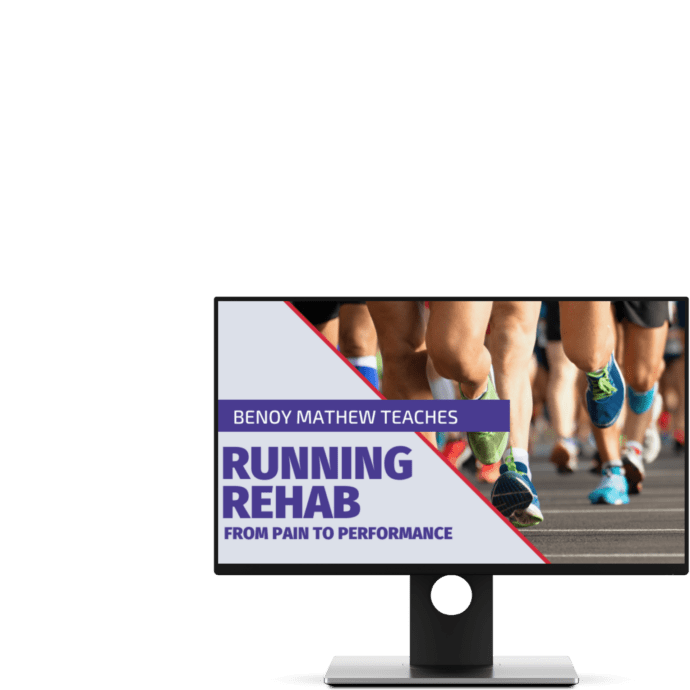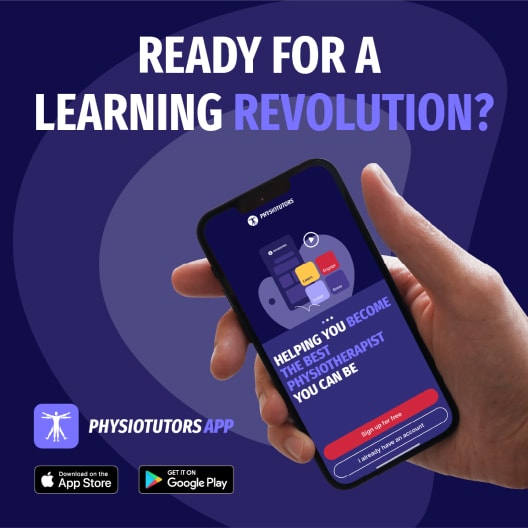Hip Osteoarthritis | Diagnosis & Treatment

Hip Osteoarthritis | Diagnosis & Treatment for Physiotherapists
Introduction

According to Felson et al. (2005) A classical feature of osteoarthritis is histological changes in the quality and thickness of joint cartilage. A decrease in joint cartilage leads to hypertrophy of the subchondral bone and osteophyte formation at the edges of the joint surfaces. Another consequence is chronic inflammation of the synovial tissue. All of these changes lead to irregular joint surfaces, bony enlargement, possible thickening of the joint capsule, and eventually hydrops. The resulting decrease in joint space is visible on radiographic imagery, which is why we also speak of “radiological osteoarthritis”.
Pain is the most evident limiting factor in osteoarthritis. As previously mentioned, the pathophysiology describes a loss of cartilage but nociceptors are missing in joint cartilage.
We know that a decrease in joint cartilage occurs also in those without clinical symptoms (radiological osteoarthritis).
Nociceptors are present in tissues surrounding the hip joint such as the joint capsule, ligaments, or the synovium. These nociceptors get triggered by the inflammation that occurs.
Osteoarthritis can occur post-traumatically, as a process of aging, and in other inflammatory conditions affecting the quality of joint cartilage.
Epidemiology
Hip osteoarthritis is less common than knee osteoarthritis. For the peak incidence between the age of 78-79, Felson et al. (1998) report an incidence of 600/100.000 person-years for females and 420/100.000 for males with hip osteoarthritis.
The point prevalence of osteoarthritis in the Netherlands in 2007 was 24,5/1000 in males and 42,7/1000 in females. Around the world, the prevalence is reported at 0,85% (Cross et al. 2014)
LEVEL UP YOUR DIFFERENTIAL DIAGNOSIS IN RUNNING RELATED HIP PAIN – FOR FREE!

Follow a course
- Learn from wherever, whenever, and at your own pace
- Interactive online courses from an award-winning team
- CEU/CPD accreditation in the Netherlands, Belgium, US & UK
Clinical Picture
For most patients, the most evident symptom is pain. Patients mostly experience pain when starting to move or after prolonged loading. The pain usually increases over the course of the day. They may also report hearing or feeling crepitations.
Patients typically report morning stiffness of up to 60 minutes. Range of motion is usually limited due to osteophyte formation. This can manifest in the difficulty or inability to tie shoes or put on socks for example.
Physical Examination
The diagnostic criteria (ACR) for hip OA are (Altman et al. 1991):
- Age >45
- Pain for more than 3 months
- Pain during loading, no increase when sitting, radiating pain into the groin/buttock/low back
- Reduced internal rotation, external rotation, extension, and flexion with bone-to-bone end feel
- Weakness of the hip abductors
- Difficulty getting going and/or stiffness when moving
- Tenderness upon palpation of the inguinal ligament
Furthermore, a cluster of tests has been described by Sutlive et al. (2008). Furthermore, the FABER test and Trendelenburg sign are referenced in the literature as measures to identify intra-articular pathology and hip abductor weakness though their validity is questionable.
Other orthopedic tests for hip osteoarthritis are:
Follow a course
- Learn from wherever, whenever, and at your own pace
- Interactive online courses from an award-winning team
- CEU/CPD accreditation in the Netherlands, Belgium, US & UK
Treatment
There is widespread consensus that conservative management of hip osteoarthritis is indicated as a first step before a total hip replacement may be considered. Randomized controlled trials of high quality showed that structured exercise programs result in decreased pain and disability compared to a control group.
National guidelines advocate for clinicians to educate a patient on the course of the condition and to promote self-management, which includes an active lifestyle, encouraging general movement, and if necessary, consulting a dietician.
With regards to exercise selection, it is advised to work across the spectrum from mobilization or “motor learning”, to balance or postural control exercises and of course strength training exercises. These exercises should work the hip complex three-dimensionally with an emphasis on the hip abductors. So let’s look at a couple of examples:
Mobilization/motor learning:
- Pelvic tilts sitting
- Hip hinge sitting/standing with aid(stick)
- Internal rotations/external rotations in sitting/lying
Posture control/ balance:
- Tandem stance (normal/Airex mat) open and closed eyes
- Single leg (normal/Airex mat) open and closed eyes
- Star excursion balance
- Hurdles side to side
Strength Training:
- Bridges (short and long lever/single leg)
- Leg Press
- BoxSquat
- Squats (kettlebell)
- Hip abductors supine/standing/clamshell/resisted standing (with aid holding on to chair)
- Adductor strengthening with a ball in supine, side-lying
- Skate sliders
- Hip extension (Roman chair/on a table with ankle weight)
These exercises can be done by a patient at home with minimal equipment. Remember that these are just sample exercises and not a tailored exercise program. The dosage of the exercise program should be tailored to the individual and their load-taking capacity and adhering to a rehab program of a minimum of 12 weeks is required.
Would you like to learn more about osteoarthritis? Then check out the following resources:
- Adding hip adductor strengthening to a strengthening program for knee OA (Research review)
- Podcast Episode 036: Hip Pathologies with Mehmet Gem
- Podcast Episode 014: Knee Osteoarthritis with Anthony Teoli
References
Follow a course
- Learn from wherever, whenever, and at your own pace
- Interactive online courses from an award-winning team
- CEU/CPD accreditation in the Netherlands, Belgium, US & UK
Running Rehab: From Pain to Performance


What customers have to say about this online course
- gustaf hübinette05/02/25A fantastic course A fantastic and comprehensive course that I feel has both broadened and deepened my knowledge of running-related injuries and their rehabilitation. The content maintains a clear and cohesive structure, firmly grounded in research. A big plus is that even after completing the course, you can revisit the material whenever you need to review certain areas.Simon20/01/25Good, but too much! It's of course a luxury problem. It delivers, absolutely. I know a lot more about running injuries now. But you need to review how much time it takes to finish this monster.
- Salih Kuzal30/12/24Running Rehab Salih Kuzal Een hele leuke uitgebreide cursus wat goed toepasbaar is in de dagelijkse praktijk. Heb er veel van geleerd!Sander Wierstra27/12/24Leerzame cursus Deze cursus heeft me inzicht gegeven om topatleten en sporters beter te begeleiden richting een duurzame herstel, ik raad deze cursus zeker aan!
- Jaime van der Lugt27/12/24Running Rehab 2.0 Well organised and clear set-up course to dive deeper into Running Rehab. Very extensive. Would definitely recommend it!Jasper Campfens24/12/24Top cursus Erg sterke cursus. Zeer uitgebreid wordt er ingegaan op alle meest voorkomende hardloopblessures. Van diagnose tot RTR.
- Carmen21/12/24Running Rehab Very good en clear course!Thorin21/12/24Sterke aanrader! Zeer uitgebreide cursus over een grote populatie binnen de bevolking. Elke kinesitherapeut zal hier veel uit bijleren, of hij nu zelf aan lopen doet of niet! Gestructureerde cursus bestaande uit Evidence-Based teksten en video's. Duidelijke toepassing van de theorie terug te vinden in de video's.
- Ivo Rigter03/12/24Running Rehab: From Pain to Performance Bedankt voor de zeer uitgebreide en informatieve cursusEllen Oosting27/11/24Veel geleerd! Veel geleerd over blessures, behandeling, training en terugkeer naar sport. Afwisselende inhoud. Veel praktische tools. Punten ook snel bijgeschreven na afronding.
- Olivier19/11/24Goede cursus! Ik kan deze cursus alle fysiotherapeuten aanraden!Joas de Bijl07/11/24Fijne cursus Goede cursus waar wetenschap en klinische ervaring in terug komt. Leuke video’s die wat mij betreft goed aansluiten op de praktijk!
- Koen24/10/24Leerzame Cursus Een cursus die een absolute bijdrage levert voor therapeuten die veel patiënten zien met hardloopblessures.
Vooral de praktische tips en de opbouw na een blessure zijn erg bruikbaar en toepasbaar in een eerste lijn praktijk.
Tevens zijn de evidence based artikelen een mooie toevoeging op de kennis die al wordt gegeven.Tim14/10/24Great course Learned a lot about running injuries. So much more structure in assessing and treating all lower limb injuries. - Maria Kramer14/10/24Running Rehab: From Pain to Performance Goede cursus voor therapeuten die veel hardloopblessures behandelen en hier meer over willen weten. Veel evidence based informatie en praktische tips voor de opbouw na een blessure.Emin Yildiz26/08/24Running Rehab: From Pain to Performance Leerzaam, uitleg en inhoud van top kwaliteit!
- Daniel Deyhle02/02/24Running Rehab: From Pain to Performance A VERY DETAILED COURSE
Really nice! Lot´s of high quality content! I learned so much. Thank you!Jarne Standaert18/04/23Running Rehab: From Pain to Performance Dit is een uitstekende cursus voor therapeuten die patiënten met loopblessures gerichter en efficiënter willen behandelen. Je krijgt enerzijds een uitgebreid overzicht van welke loopgerelateerde blessures zich vaak voordoen. Anderzijds krijg je een goed onderzoekskader om de tekorten bij je patiënten op te sporen en dus ook gerichter te behandelen. De cursus is heel duidelijk. Je krijgt ook een goed beeld van welke oefentherapie je best toepast in een bepaald stadium van een bepaalde pathologie - Hannah Yelin09/04/23Running Rehab: From Pain to Performance A great course that gives you a comprehensive and detailed knowledge of various running complaints. The content is evidence based and the literature is attached. It is very well taught how to transfer the evidence into everyday practice. I highly recommend this course to all physios who work with runners.
Thank you for a great course!Ruba Al Barghouthi23/10/22Running Rehab: From Pain to Performance Very informative course. Highly recommended for every MSK Physiotherapist and any other health care providers who deal with runners.







